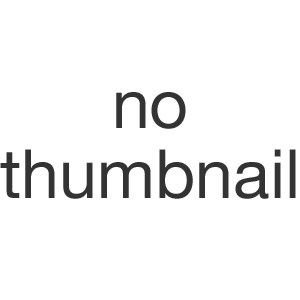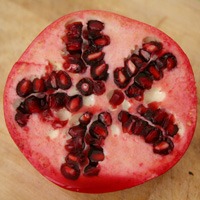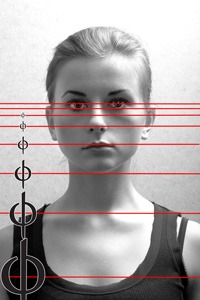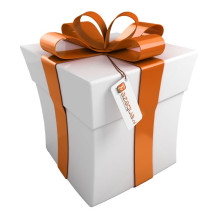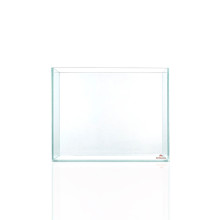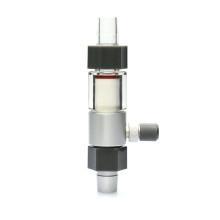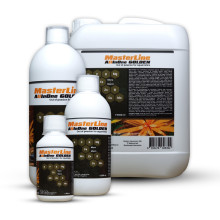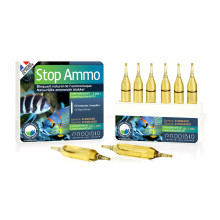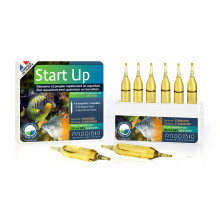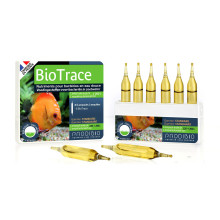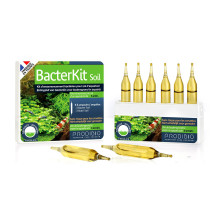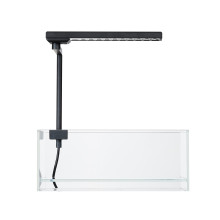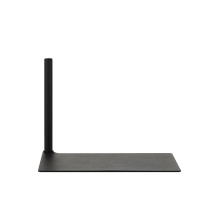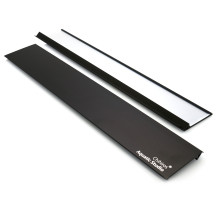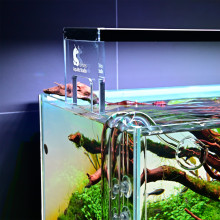The art of the aquarium setting up
Text and illustrations by Wilco Kitty
The living painting is a common term in the aquarium. However, to the aquarium in a good way often proves to be quite a challenge. The one has more talent for it than others, just like the one a better photographer than the other. The art and nature is much information we can get to actually have a real natural work of art to create between our 5 glued glass panels. In this article, I hope the artist in you to speak and to encourage them to with a different eye to the aquarium to look. The aquarium: a glass canvas, where a whole world is to give shape, with a spectacle of harmony and life, what continues to fascinate and no moment is the same.
The golden mean
For a very long time ago, humans have become aware of a relationship that is surprising how much comes back in the nature. Many philosophers, mathematicians, biologists and physicists have studies devoted to the phenomenon. Among others, Plato, Leonardo da Vinci and Fibonacci, and over the centuries, there are terms used, such as divine proportion, divine division, golden ratio, golden number, golden section, divine proportion, and many others. There have emerged, for example the golden spiral.
Everyone has heard of it, but what is it exactly? And more importantly: how can applying this knowledge in the aquarium and everyday life?
Now, the golden ratio is a number that is infinite and is denoted by the symbol ϕ. This is the Greek letter ‘phi’ or ‘fi’. How it is calculated may be a bit difficult to understand, but it works as follows:
|
If we have a straight line dividing it into a large half and the small half, so that AB is to AC in the same ratio as AC to CB, it delivers a ratio of about 1,61803 to 1. A formula that (1+√5):2 and gives infinitely many digits after the decimal point. There are several examples where the golden ratio comes to the fore, as is evident from the following example: We draw a square. The point of a pair of compasses prick we then, in the middle of the bottom. As the stylus traces on 1 of the furthest corners, and a semi-circle, we get the figure here on the right: If we take this rectangle always in the same ratio of increase, and a quarter turn, we can the golden spiral: The use of a pentagram, the sides in a ratio of 1,61803 to 1 to be divided as shown in the example opposite: |
 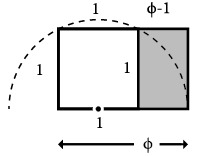 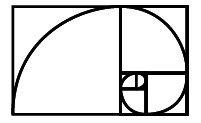 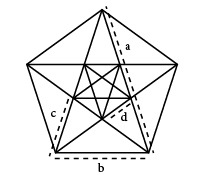 |
Fibonacci
| Fibonacci is known for the set of numbers that is named after him and is based on a representation of 1 pair of rabbits in a closed space and every couple of rabbits after 2 months a new pair of rabbits produces. The number of pairs of rabbits starts with 1 and then each month to ,1,2,3,5,8,13,21,34,55,89,144,233,377,610,987,1597,2584,4181 etc. Each new number is the sum of the 2 numbers before it. The special feature is that when you get the last number divide by the number there for, there is always the number of the golden ratio comes to the fore. The Fibonacci series and the “divine ratio” is remarkably often found in nature. The petals of a rose moving in a circle around the middle, and each new petal is located approximately 137,5 degrees of the previous sheet. This angle is the “golden angle” and is found if we 360graden multiplication with ϕ.
|
|
The Golden ratio and the aquarium |
|
| Or the aquarium now 30cm or 3m wide, each tank in this ratio are divided. The spiral we can use for the focal point of the composition to determine and plants in the foreground around to walk or plants to luifelen. We can also ensure that the ends of wood or stone, the imaginary spiral hit. The human brain is set up to recognize patterns. Unconsciously we create in our mind wherever imaginary lines to allow connections to search or things to bring. Lijnende objects give peace and if objects are not on a line, we experience that as annoying and restless. How disturbing or striking, you will find it yourself if, for example, a painting crooked all depends on a broken paving stone sticking out? If we are to make the composition so subtle a pattern involved, it is even easier to our eyes to the focal point to lead and at the same time a soothing, captivating image to create. Subconsciously, we connect points with each other and we keep people at the same time, of triangles. Triangles give a sense of peace and order. By imaginary lines between points in the composition, and triangles, create a balance sheet. These lines we can make, for example, by the tops of a plant to prune, so that the height exactly on the proper line. Or to wood or stone in such a position so that they, too, with “lines” in service of the overall composition. The advantage of wood and stone is that this will be at an angle, which direction can be given and the eye still can be better led by the performance. Also the balance between the décor and the open space we can divide them according to the golden ratio. Many of the photos to be made of a setting sun on the horizon use the same principle. The horizon keeps you on the line according to the golden section, and an object is placed on the eye of the golden spiral. For example, as the following example:
|
 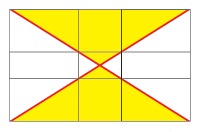 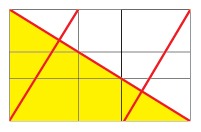 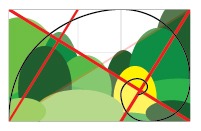  |
Planting and Hardscape
To create a composition and lines, we choose for contrast. We must, after all, a distinction to make between the points of the imaginary lines to draw.
| Contrast between: | |
| large and small | large groups of plants in addition to small groups of plants plants with large leaves next to plants with small leaves large stones and small stones large pieces of wood and small pieces of wood |
| form | plants with round leaves next to plants with pointed leaves plants with feathery leaves next to plants with large rounded leaves |
| texture | plants next to stone plants in addition to timber, moss in addition to plants moss on wood plants on stones stone next to wood plants in addition to sand sand in addition to stones |
| color | red plants in addition to green plants onkergroene plants next to dark green plants grey stone in addition to green plants dark wood, next to green plants light sand in addition to green plants |
| high and low | tall plants next to small plants high side and low side |
| front and rear | behind high and low |
There are probably still more contrastvormen to call with all types of plants and materials that we have at our disposal. And there are even multiple contrastvormen at the same time.
Of course, should be awaited that it is not a motley bunch. A useful starting point is to 1 plant per 10 cm of the aquariumlengte to handle. Use also but up to 1 stone and not more than 1 species per aquarium. In nature, rarely have multiple species in one area. The use of multiple types of returns so quickly to an unnatural image.
The night watch by Rembrandt |
|
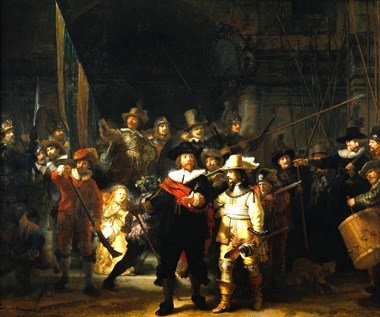 |
 |
| At first glance it all looks what happen to be going to the 2 men who are central in the middle of the cloth and is there for the rest not much to notice. Now the more we have come to know about the making of a composition and the drawing of imaginary lines, it is all a lot less of a coincidence. When we see the golden spiral (red) sign, we see that the girl in the background at exactly the golden ratio. The man in the gold is exactly located at a point of intersection of the golden mean (yellow). The imaginary line (green) which is by the faces of the men on the left ends at the face of the girl. The lines through the faces of the men on the right, runs through the face of the man in the golden suit, and also comes out on the face of the girl. It will not be a coincidence if other elements are used to the eye of the viewer to the girl to lead. The long lance to the right goes across the face of the person in the middle and points to the girl (grey). The flag of the man on the left, just behind the man in the red depends, brings the eye to the girl. If we look more closely, we also see that almost all of the weapons and sticks on a head. The line through the heads of the men in the background are located on the top horizon ratio. The face of the girl on the bottom horizon (yellow). Also the use of contrasts in colour, between light and dark, large and small, in front and behind. The face of the man who is central in the foreground, is located exactly on the middle of the cloth. While the optical seems as if he has something left of the middle. What is the story, Rembrandt is trying to tell with this painting is hidden for anyone to know where he should look. Everything together ensures that the canvas in no time uninteresting and you are there to look. Something that we have in the aquarium, also like to for each other! | |
"Learn to look at what is behind the trees alive
and to what you the night of your dreams gives"
David the Gnome

